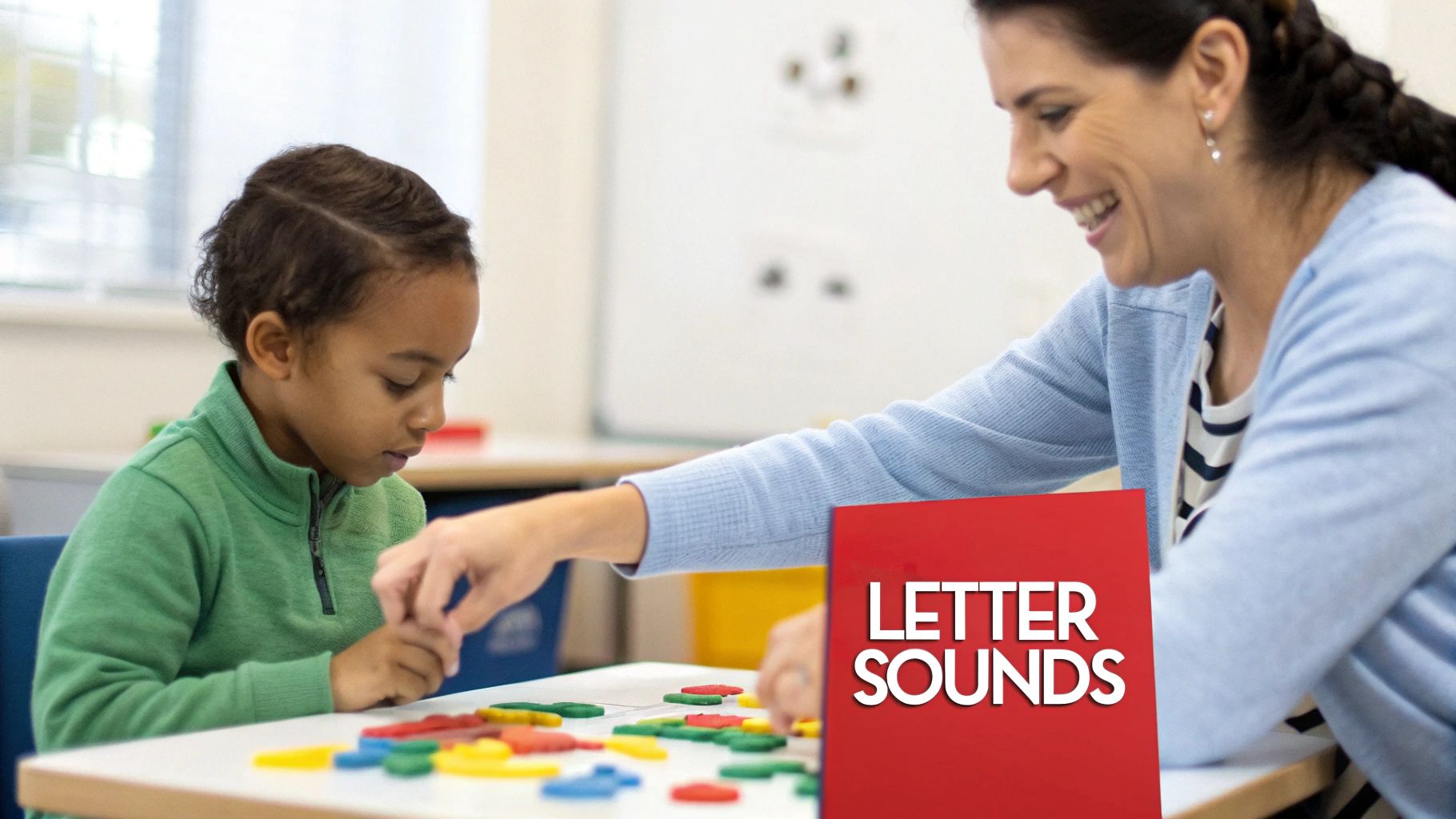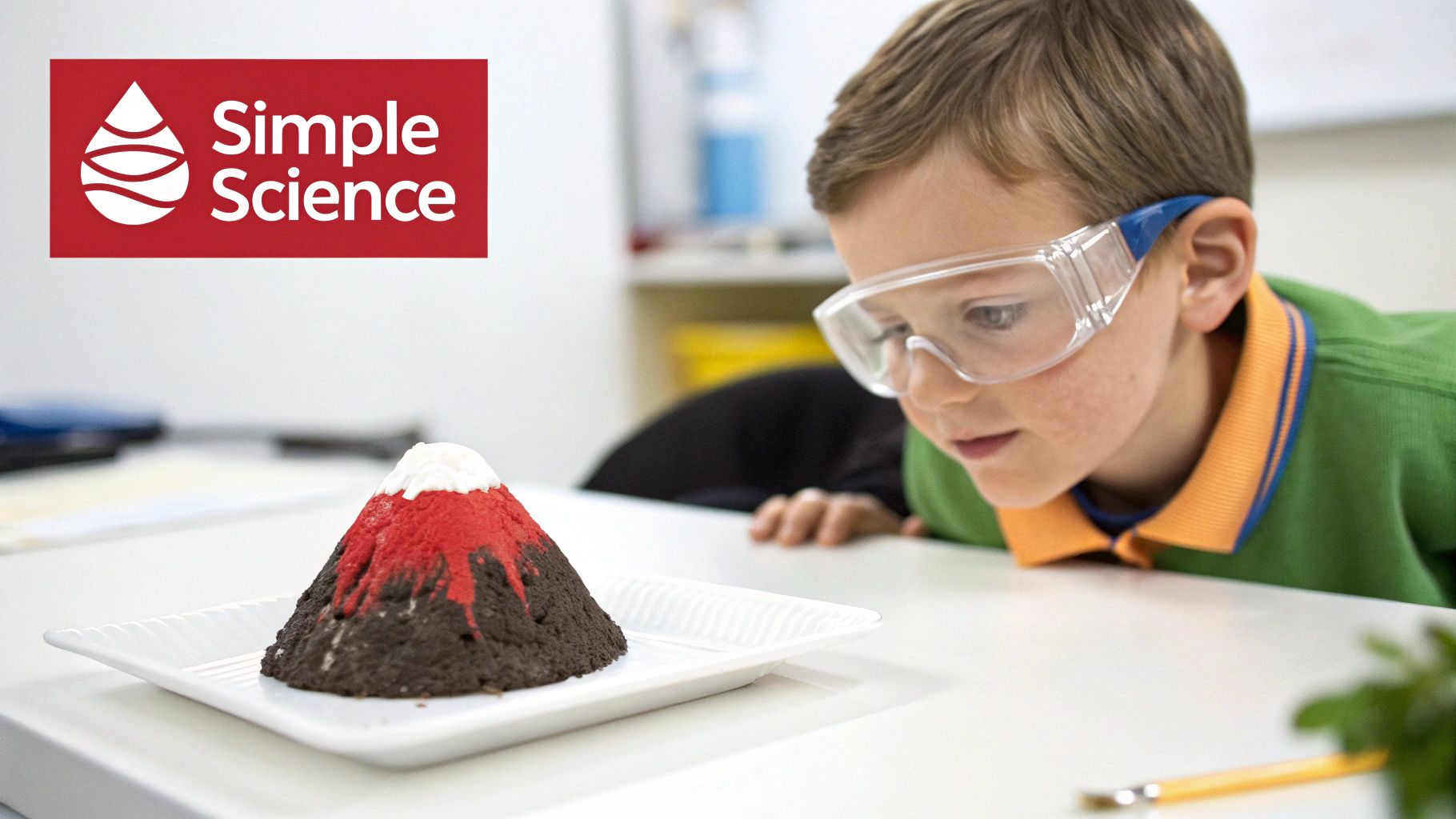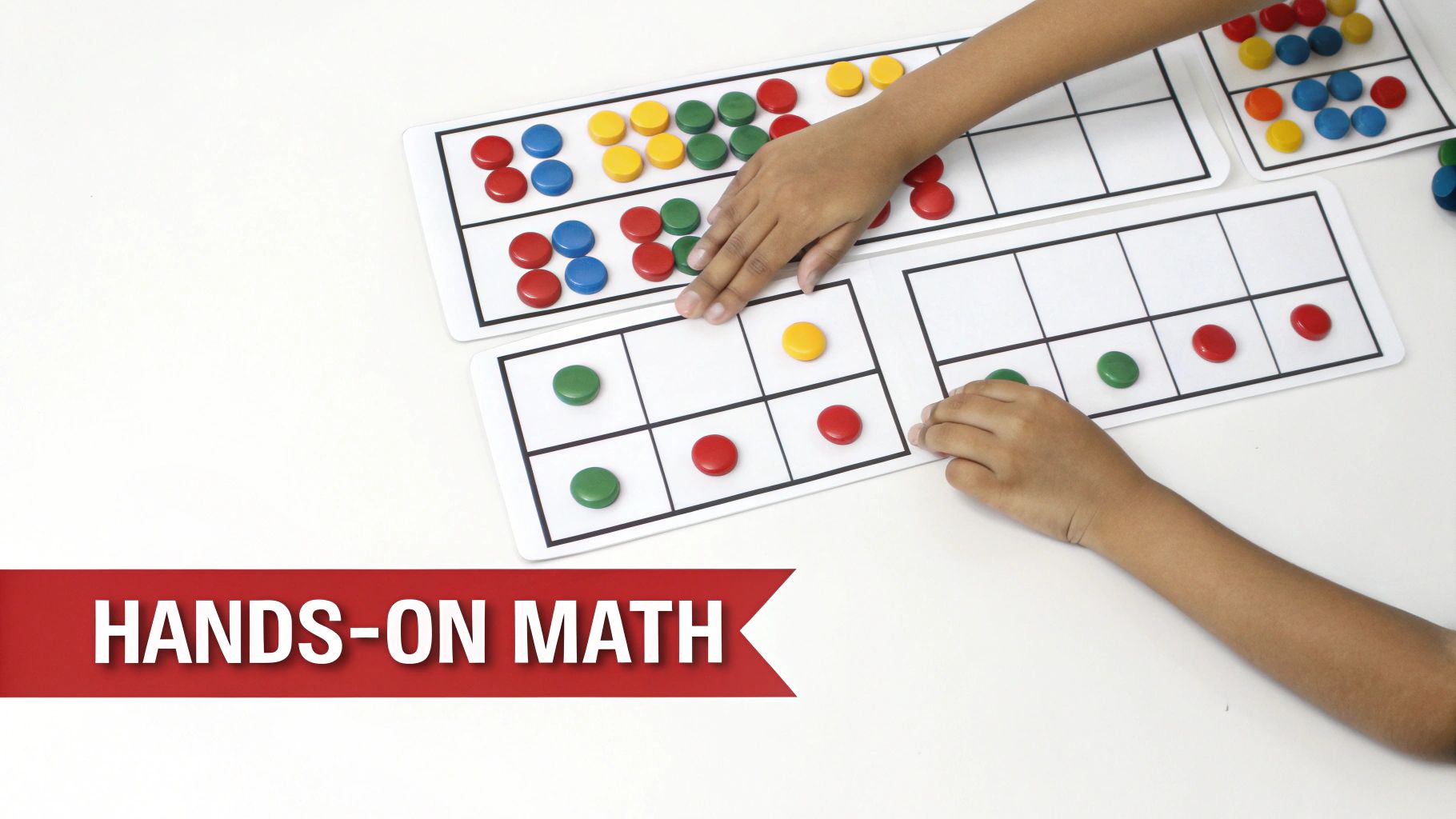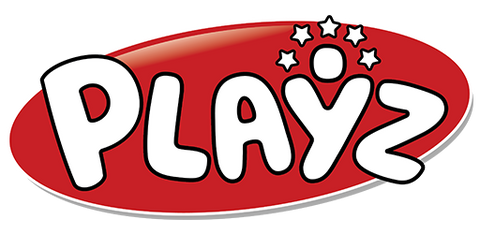
10 Fun & Educational Activities for 1st Grade (2025 Guide)
Welcome to the exciting world of first grade, a pivotal year where your child's curiosity blossoms and foundational skills take root. This guide is your ultimate resource for proven, educational, and genuinely fun activities for 1st grade that build essential skills in reading, math, science, and social-emotional learning. We move beyond generic advice to provide you with specific, actionable ideas that require simple materials and deliver significant learning impact.
In today's environment, finding effective screen-free activities to keep kids busy is essential for fostering creativity and hands-on development. The activities detailed here are designed to do just that, promoting critical thinking, collaboration, and fine motor skills away from digital distractions. Each suggestion includes clear objectives, a simple materials list, and step-by-step instructions to ensure success.
From hands-on science experiments and creative art projects to movement games and interactive read-alouds, this list offers a comprehensive toolkit for parents and educators. You will discover how to transform everyday moments into powerful learning opportunities. Get ready to turn learning into a memorable adventure that will spark a lifelong love for discovery.
1. Phonics and Letter Recognition Games
Phonics and letter recognition games are structured, playful activities for 1st grade designed to build the essential foundation for reading. These games transform learning letter sounds, shapes, and their combinations into an engaging experience rather than a rote memorization task. By using visual, auditory, and kinesthetic methods, children connect sounds to symbols, decode words, and develop reading fluency in a low-pressure environment.

This approach is highly effective because it aligns with how young learners absorb information. It moves beyond simple flashcards to create memorable, hands-on interactions with language. Successful programs like the Wilson Reading System and the Letterland curriculum demonstrate how systematic, multisensory play can dramatically improve early literacy outcomes.
How to Implement Phonics Games
- Use Physical Manipulatives: Incorporate magnetic letters, sandpaper letters, or letter blocks to provide a tactile learning experience.
- Incorporate Music and Rhyme: Use songs and chants to reinforce letter sounds, making them easier for children to remember.
- Practice in Short Bursts: Aim for consistent, 15-20 minute daily sessions to maintain engagement and build momentum without overwhelming your first grader.
- Connect to Everyday Objects: Point out the letter "A" in "apple" or "C" in "cat" to ground abstract concepts in the real world.
For more ideas on how to integrate play into learning, you can discover some of the best learning games for kids. By making phonics a fun, interactive part of their routine, you set the stage for a lifetime of confident reading.
2. Hands-On Science Experiments and Exploration
Hands-on science experiments are inquiry-based activities for 1st grade that allow children to explore natural phenomena through direct observation and interaction. These activities transform abstract scientific concepts like life cycles, weather patterns, or states of matter into tangible, memorable experiences. By using safe, everyday materials, first graders can ask questions, make predictions, and discover outcomes for themselves, building a strong foundation for scientific thinking.

This method is highly effective because it nurtures a child's natural curiosity and makes learning an adventure. Instead of just reading about a volcano, they can create one with baking soda and vinegar. Curricula like FOSS (Full Option Science System) and resources from the National Science Teachers Association (NSTA) champion this approach, proving that active participation leads to deeper understanding and retention of scientific principles.
How to Implement Science Experiments
- Create Observation Journals: Encourage children to draw or write what they see during an experiment, such as tracking seed germination over several days.
- Use Picture Instructions: Provide simple, step-by-step visual guides to help first graders work more independently and build confidence.
- Pre-test Everything: Always try an experiment yourself beforehand to ensure it works as expected and to identify any potential challenges.
- Connect to Real-World Events: Link experiments to seasonal changes, like exploring why leaves change color in the fall or how ice melts in the spring.
For more structured projects, you can explore the benefits of dedicated science kits for kids. By making science an interactive, hands-on part of their learning, you foster critical thinking and a lifelong love for discovery.
3. Creative Art and Craft Projects
Creative art and craft projects are open-ended activities for 1st grade that encourage self-expression and innovation. These projects, including painting, collage, and sculpture, allow children to explore different materials, colors, and textures without the pressure of a "correct" outcome. By focusing on the creative process rather than the final product, these activities build fine motor skills, boost confidence, and nurture problem-solving abilities.
This hands-on approach is effective because it honors a child's unique perspective and allows them to communicate ideas visually. Educational philosophies like the Reggio Emilia approach and pioneers like Elliot Eisner champion art as a critical language for learning, demonstrating its power to develop cognitive and emotional skills. It transforms simple materials into powerful tools for storytelling and discovery.
How to Implement Art and Craft Projects
- Offer a Variety of Materials: Provide access to different mediums like clay, recycled materials, tempera paints, and fabric scraps to inspire creativity.
- Focus on the Process, Not Perfection: Encourage experimentation and praise effort over the finished product to build a positive association with art.
- Create Themed Activities: Structure projects around seasons, holidays, or classroom learning themes (e.g., creating animal masks after a science lesson).
- Display Every Creation: Showcase all completed artwork to validate each child's effort and celebrate their unique artistic voice.
For more inspiration, you can find a wealth of fun and accessible cardboard craft ideas. Integrating regular, unstructured art time helps first graders develop essential skills while expressing their individuality.
4. Cooperative Learning Games and Team Activities
Cooperative learning games and team activities are structured group activities designed to build essential social skills like teamwork, communication, and problem-solving. These activities for 1st grade shift the focus from individual competition to collaborative success, teaching children how to work together toward a common goal. By requiring interdependence and shared responsibility, they help foster positive peer relationships while reinforcing academic concepts in a dynamic, interactive way.
This approach is highly effective because it mirrors real-world scenarios where collaboration is key. Educational theorists like Spencer Kagan and David Johnson have demonstrated that cooperative learning improves academic achievement, self-esteem, and social competence. Instead of competing against each other, students learn to support their teammates, value diverse perspectives, and celebrate collective accomplishments.
How to Implement Cooperative Learning Games
- Assign Roles Clearly: Give each child a specific job, such as "Reader," "Recorder," "Presenter," or "Timer," to ensure everyone participates and understands their contribution.
- Mix Ability Levels Strategically: Create small groups with a mix of skill levels to encourage peer teaching and ensure that all students can contribute meaningfully.
- Use Timers to Keep Activities Focused: Set clear time limits for tasks to maintain momentum and help students practice time management skills.
- Debrief About Teamwork: After the activity, discuss how the group worked together. Ask questions like, "What helped your team succeed?" or "What could you do differently next time?" to reinforce social-emotional learning.
To further develop social skills and teamwork, explore a variety of engaging options, such as these Top Group Activities for Children. By making collaboration a fun and intentional practice, you help first graders build the interpersonal skills they will need throughout their lives.
5. Interactive Read-Aloud and Story Time
Interactive read-alouds are dynamic storytelling sessions designed to actively involve children in the narrative process. This approach transforms passive listening into an engaging, collaborative experience where first graders participate in discussions, make predictions, and connect with the text on a deeper level. By intentionally pausing to ask questions and encourage dialogue, educators and parents build crucial listening skills, expand vocabulary, and foster a genuine love for reading.
This method is highly effective because it makes reading a shared, social event rather than a solitary task. It models fluent, expressive reading and teaches comprehension strategies in a natural, conversational way. Proponents like Jim Trelease, author of The Read-Aloud Handbook, have long championed this practice for its proven ability to improve literacy outcomes and build a strong foundation for independent reading. It’s one of the most powerful and enjoyable activities for 1st grade learners.
How to Implement Interactive Read-Alouds
- Use Expressive Voices: Change your tone, pitch, and pace to match different characters and events in the story to captivate your audience.
- Pause for Predictions: Stop at key moments and ask, "What do you think will happen next?" This encourages critical thinking and active engagement.
- Incorporate Props and Puppets: Bring characters to life with simple puppets or props related to the story, making the experience more memorable.
- Connect to Their Lives: Ask questions that link the story to the children's own experiences, such as, "Have you ever felt brave like the main character?"
To get started, you can find a wealth of recommended books and strategies from literacy experts like Mem Fox. By making story time interactive, you help children not just hear a story, but truly understand and connect with it.
6. Movement and Physical Activity Games
Movement and physical activity games are structured, energetic activities for 1st grade that integrate physical exercise with learning. These activities are designed to develop gross motor skills, coordination, and body awareness while providing much-needed brain breaks. By channeling a child's natural energy into purposeful movement, these games improve focus, reduce restlessness, and support overall classroom management and healthy habits.
This approach is effective because it recognizes the powerful link between physical movement and cognitive function. Engaging the body helps solidify academic concepts, making learning a whole-body experience. Popular platforms like GoNoodle and Cosmic Kids Yoga have successfully demonstrated how guided movement can enhance attention and retention, turning a simple physical break into a valuable learning opportunity.
How to Implement Movement Games
- Integrate Academic Content: Play "Simon Says" with actions related to vocabulary words (e.g., "Simon says pounce like a jaguar") or math problems (e.g., "Jump three times").
- Use Music and Guided Videos: Incorporate dance-alongs or freeze dance to keep energy levels high and provide clear structure.
- Schedule Regular Movement Breaks: Plan short, 5-10 minute activity sessions between seated tasks to help reset focus and burn off excess energy.
- Modify for All Abilities: Ensure activities are inclusive by offering variations, such as doing movements while seated or simplifying complex actions.
Movement is a fundamental part of how many children process information. To explore this further, you can learn more about the kinesthetic learning style. By making active games a regular part of their day, you support both their physical health and academic success.
7. Math Manipulatives and Concrete Number Activities
Math manipulatives and concrete number activities are hands-on tools that help first graders grasp abstract mathematical concepts. By using physical objects like counters, base-ten blocks, and number lines, children can see, touch, and move numbers, transforming complex ideas like addition, subtraction, and place value into tangible, understandable actions. These activities for 1st grade build a strong foundation by connecting concrete experiences to abstract symbols.

This approach is highly effective because it follows the natural learning progression from concrete to abstract. Leading educational frameworks, such as the Singapore Math curriculum and the work of educators like John Van de Walle, emphasize manipulatives to develop deep number sense rather than rote memorization. Using ten frames to show 7 + 3 = 10 or base-ten blocks to represent the number 34 makes math intuitive and less intimidating.
How to Implement Concrete Number Activities
- Use a Variety of Tools: Introduce different manipulatives like dice for addition games, Rekenreks for counting fluency, and Cuisenaire rods for exploring number relationships.
- Model Thinking Aloud: Demonstrate how to use the objects while explaining your thought process. For example, say, "I have five counters, and I need to add three more. Let's count them all together."
- Create Learning Stations: Set up different stations, each with a unique manipulative and a simple math problem to solve, allowing for varied, focused practice.
- Bridge to Abstract: After your child masters a concept with manipulatives, guide them to represent it with drawings, and finally, with just numbers and symbols.
8. Dramatic Play and Role-Playing Centers
Dramatic play and role-playing centers are designated areas where students engage in imaginative scenarios, transforming a corner of a room into a pretend shop, doctor's office, or restaurant. These activities for 1st grade are powerful tools for developing social skills, language, and a deeper understanding of real-world concepts. By taking on different roles, children practice communication, problem-solving, and empathy in a dynamic, play-based setting.
This method is highly effective because it allows children to process and apply their knowledge in a meaningful context. The work of educational theorists like Vivian Gussin Paley highlights how such imaginative play is crucial for cognitive and social-emotional growth. It turns abstract ideas, like commerce or community helpers, into tangible, memorable experiences.
How to Implement Dramatic Play Centers
- Integrate Literacy and Math: Create shopping lists for a grocery store, write prescriptions at a doctor's office, or design menus for a restaurant to seamlessly blend academic skills into play.
- Provide Props and Costumes: Stock the center with relevant items like play money, empty food containers, stethoscopes, or mailbags to make the experience more immersive.
- Rotate Themes Monthly: Keep the activity fresh and exciting by changing the theme regularly, moving from a post office one month to a veterinarian clinic the next.
- Use Role-Based Vocabulary: Introduce and display key words related to the center's theme, such as "cashier," "patient," or "customer," to expand your first grader's vocabulary.
By setting up these imaginative spaces, you provide an environment where learning is driven by curiosity and collaboration, making it one of the most enriching activities for 1st grade.
9. Writing Workshop and Emergent Writing Activities
Writing workshops and emergent writing activities are structured yet creative activities for 1st grade that nurture a child's journey from scribbles to sentences. This approach combines teacher modeling, guided practice, and independent writing time to build confidence and skill. Instead of focusing on perfect spelling and grammar, the goal is to encourage communication, celebrate effort, and treat writing as a meaningful process of expressing ideas through pictures, letters, and words.
This method is effective because it honors each child’s developmental stage, from drawing and labeling to constructing simple sentences. Influential educators like Lucy Calkins and Donald Graves have championed this process-oriented approach, which shows that when children see themselves as authors, their motivation and skills flourish. It transforms writing from a daunting task into an empowering form of self-expression.
How to Implement Writing Workshops
- Accept All Attempts: Initially, focus on the message rather than mechanics. Praise your first grader’s effort to communicate ideas, whether through pictures, letter strings, or inventive spelling.
- Use Scaffolding Tools: Provide word walls with high-frequency sight words and sentence frames (e.g., "I see a ___.") to help children build sentences with confidence.
- Create Authentic Writing Opportunities: Encourage writing thank-you notes, grocery lists, or simple greeting cards. These real-world tasks make writing purposeful and fun.
- Establish a Routine: Dedicate a consistent time for a "writing workshop" where your child can draw and write in a special journal or folder to track their progress.
These activities also strengthen the small hand muscles needed for proper pencil grip and control. You can explore additional ways to improve fine motor skills to further support your young writer's development. By creating a supportive environment, you help build a positive foundation for a lifetime of writing.
10. Music, Songs, and Rhythm Activities
Music, songs, and rhythm activities are some of the most joyful and effective activities for 1st grade, designed to enhance cognitive development through auditory engagement. These activities use melody, beat, and repetition to teach concepts ranging from language skills to mathematics. By integrating singing, instrument play, and movement, children improve memory, auditory discrimination, and coordination in a naturally stimulating and enjoyable way.
This multisensory approach is highly effective because it activates multiple areas of the brain simultaneously, strengthening neural pathways. It transforms learning into a fun, social experience that supports emotional expression and group cohesion. Renowned methodologies like the Orff-Schulwerk approach and the Suzuki method highlight how structured musical play can accelerate learning and build a strong foundation for academic and personal growth.
How to Implement Music and Rhythm Activities
- Start with Familiar Melodies: Use well-known tunes like "Twinkle, Twinkle, Little Star" to introduce new concepts, such as singing the alphabet or counting songs.
- Incorporate Body Percussion: Use clapping, stomping, and snapping to create rhythm patterns, helping children internalize concepts of beat and sequence.
- Use Call-and-Response Songs: Engage children with interactive songs where they echo phrases or actions, which builds listening skills and boosts participation.
- Connect Songs to Curriculum: Tie musical activities to current learning themes. For example, sing a song about plant life cycles during a science unit or a song about historical figures.
For fantastic educational music resources, check out the popular YouTube channel Super Simple Songs, which provides a vast library of songs perfect for first graders. By making music a regular part of their routine, you foster creativity and make learning memorable.
10-Point Comparison: 1st Grade Activities
| Activity | Implementation Complexity 🔄 | Resource Requirements ⚡ | Expected Outcomes ⭐📊 | Ideal Use Cases 💡 | Key Advantages ⭐ |
|---|---|---|---|---|---|
| Phonics and Letter Recognition Games | Low–Moderate; structured progression 🔄 | Letter manipulatives, apps, brief teacher modeling ⚡ | Strong decoding & reading readiness; early fluency ⭐⭐⭐⭐ 📊 | Small groups, literacy centers, daily practice 💡 | Highly engaging; multi-sensory foundation ⭐ |
| Hands‑On Science Experiments & Exploration | Moderate; prep and safety checks needed 🔄 | Low‑cost consumables, supervision, prep time ⚡ | Inquiry skills, curiosity, observation habits ⭐⭐⭐ 📊 | Science units, seasonal phenomena, journals 💡 | Makes abstract concepts tangible; memorable learning ⭐ |
| Creative Art & Craft Projects | Low–Moderate; open‑ended management 🔄 | Paints, paper, storage space, cleanup supplies ⚡ | Fine motor development, creativity, self‑expression ⭐⭐⭐ 📊 | Art centers, cross‑curricular projects, emotional expression 💡 | Encourages creativity and confidence; process‑focused ⭐ |
| Cooperative Learning Games & Team Activities | Moderate; explicit teaching of roles 🔄 | Minimal materials; clear routines and grouping ⚡ | Social‑emotional skills, communication, teamwork ⭐⭐⭐ 📊 | Content review, group problem solving, social lessons 💡 | Builds classroom community; differentiates instruction ⭐ |
| Interactive Read‑Aloud & Story Time | Low; book selection and planning 🔄 | Quality picture books, optional props or puppets ⚡ | Vocabulary growth, listening comprehension, engagement ⭐⭐⭐⭐ 📊 | Whole‑class routines, modeling fluent reading, morning meetings 💡 | Models fluency; shared literary experiences ⭐ |
| Movement & Physical Activity Games | Low–Moderate; space and safety planning 🔄 | Open area, music device, simple props ⚡ | Improved focus, gross motor skills, energy regulation ⭐⭐ 📊 | Brain breaks, transitions, kinesthetic lessons 💡 | Regulates attention; supports physical health ⭐ |
| Math Manipulatives & Concrete Number Activities | Moderate; progressive scaffolding 🔄 | Manipulative sets, storage, teacher modeling ⚡ | Deep conceptual understanding and number sense ⭐⭐⭐⭐ 📊 | Math stations, small‑group instruction, concrete→abstract lessons 💡 | Concrete-to-abstract learning; self‑checking tools ⭐ |
| Dramatic Play & Role‑Playing Centers | Moderate; center design and routines 🔄 | Themed props, dedicated space, rotation plan ⚡ | Oral language growth, social role‑taking, imagination ⭐⭐⭐ 📊 | Literacy integration, social‑emotional centers, vocabulary practice 💡 | Authentic language use; fosters social development ⭐ |
| Writing Workshop & Emergent Writing Activities | Moderate–High; differentiation and feedback 🔄 | Writing supplies, routines, teacher conferring time ⚡ | Improved letter formation, composition, confidence ⭐⭐⭐⭐ 📊 | Daily writing routines, publishing, journaling 💡 | Integrates reading/writing; celebrates effort ⭐ |
| Music, Songs & Rhythm Activities | Low; routine selection and pacing 🔄 | Audio, simple instruments, space for movement ⚡ | Memory, rhythm skills, language and phonological awareness ⭐⭐⭐ 📊 | Transitions, memorization, phonics reinforcement 💡 | High engagement; supports retention and auditory processing ⭐ |
Your Adventure in Learning Starts Now
First grade is a truly magical period of development, a year where foundational skills blossom into confident abilities. The journey through this pivotal time doesn't have to be confined to worksheets and rote memorization. As we've explored, the most impactful learning happens when it's joyful, hands-on, and connected to a child's natural curiosity. The collection of activities for 1st grade detailed in this guide provides a comprehensive toolkit for nurturing a well-rounded, enthusiastic learner.
By transforming learning into a game, an experiment, or a creative project, you do more than just teach a concept; you build a positive relationship with education itself. This approach shows a child that learning is not a chore but an exciting adventure filled with discovery.
Weaving Learning into Everyday Life
The true power of these activities lies in their adaptability. You don't need a dedicated classroom or an elaborate schedule to make a significant impact.
- Phonics and Math: A simple trip to the grocery store becomes a chance to sound out words on a cereal box (Phonics Games) or count apples and oranges into the cart (Math Manipulatives).
- Science and Art: A walk in the park can spark a discussion about why leaves change color (Hands-On Science) or inspire a nature-based collage (Creative Art Projects).
- Social and Emotional Growth: A disagreement over a toy can be a teachable moment for collaborative problem-solving, mirroring the skills learned in Cooperative Learning Games.
The key takeaway is that learning is holistic. The physical coordination gained from Movement Games can improve the fine motor skills needed for a Writing Workshop. The emotional expression explored in Dramatic Play can enhance the comprehension of characters during an Interactive Read-Aloud. Every activity supports and enriches the others, creating a strong, interconnected foundation for academic and personal growth.
Your Role as the Guide on the Side
Your most important role in this process is to be an engaged and encouraging guide. The goal is not to achieve a perfect outcome in every activity but to celebrate the effort, the questions, and the "aha!" moments along the way. When a child sees your enthusiasm for their makeshift fort, their wobbly sentence, or their fizzing volcano experiment, they learn that trying is more valuable than perfection.
Remember to observe and adapt. If a child is struggling with a writing activity, perhaps shifting to a storytelling game will build their confidence. If they seem disengaged during a math lesson, introducing colorful blocks or a fun counting song might reignite their interest. These activities for 1st grade are not a rigid checklist but a flexible menu of options to inspire a lifelong love of learning. By embracing this playful, integrated approach, you are giving your first-grader the greatest gift: the confidence and curiosity to explore their world.
Ready to take hands-on learning to the next level? Explore the award-winning science kits, play tents, and educational toys from Playz that perfectly complement these activities. Visit Playz to find the perfect tools to spark your first grader's imagination and turn playtime into a powerful learning experience.
